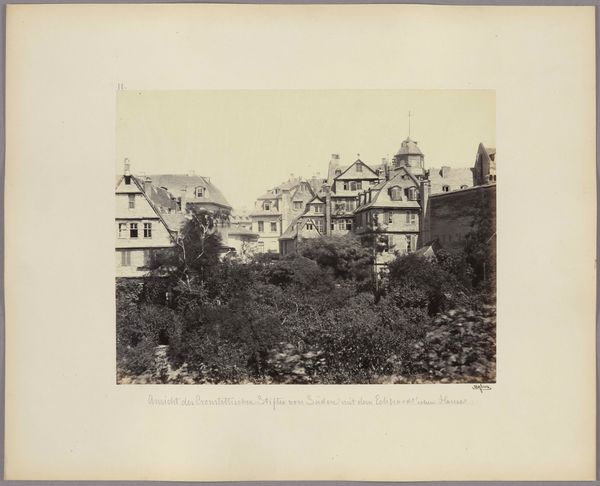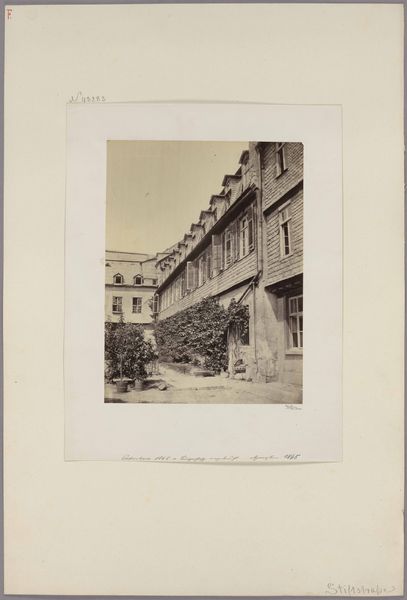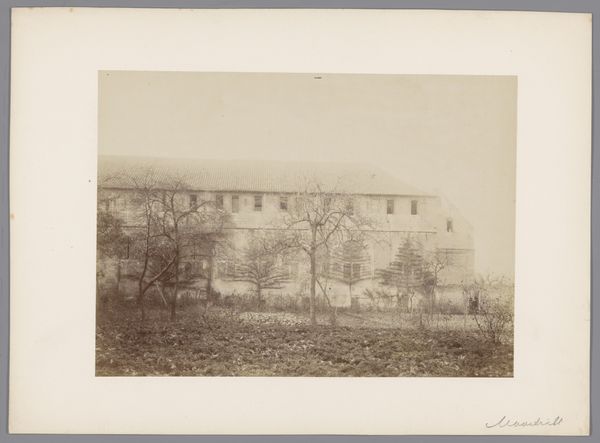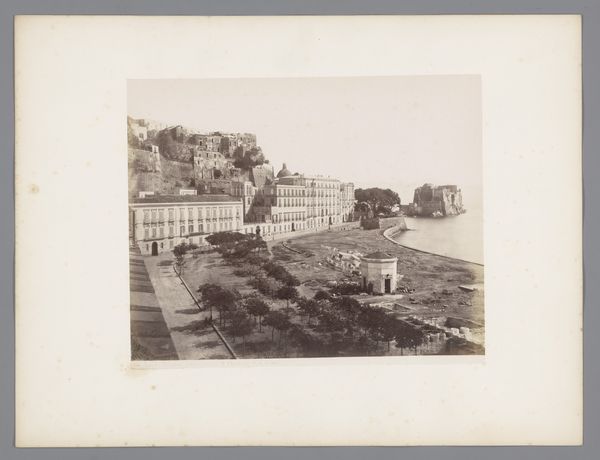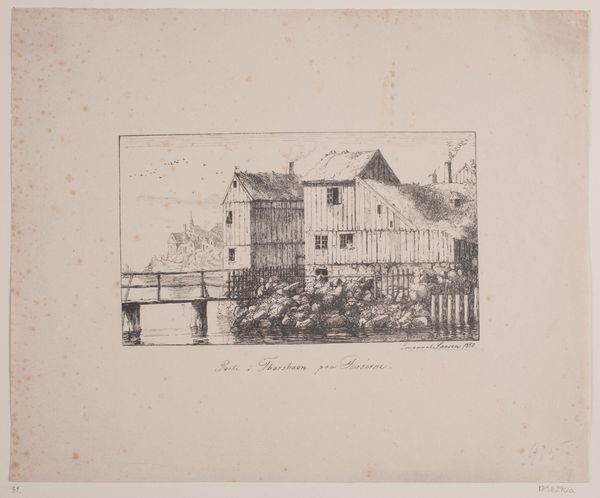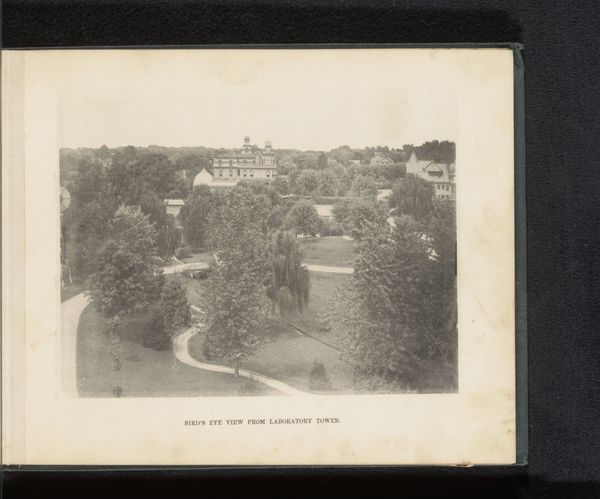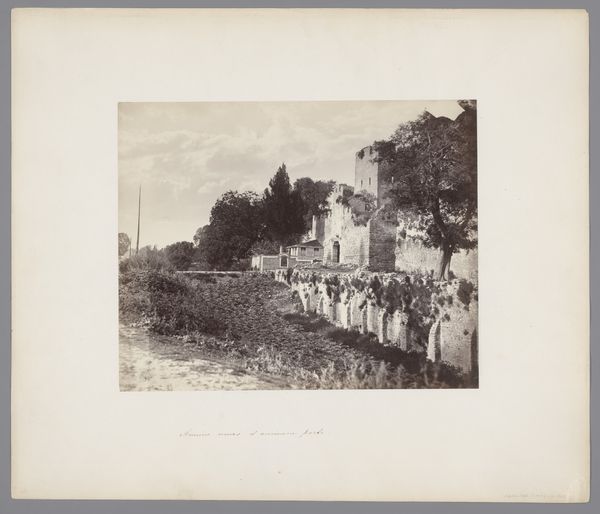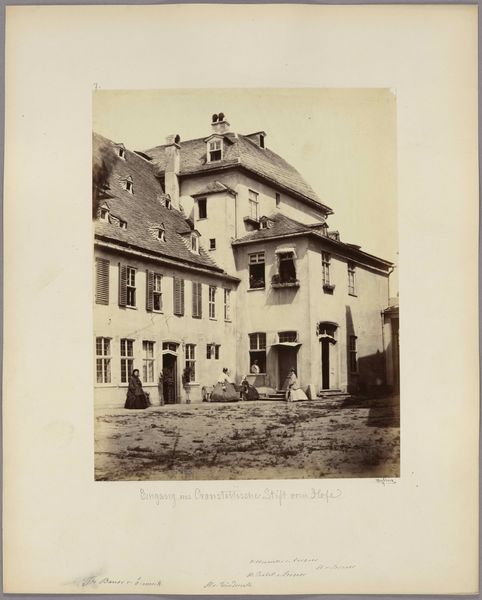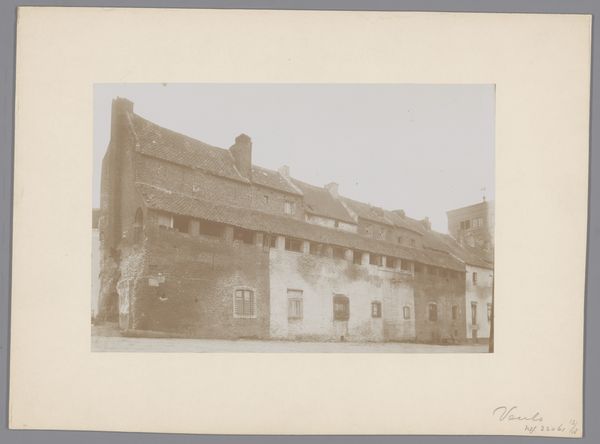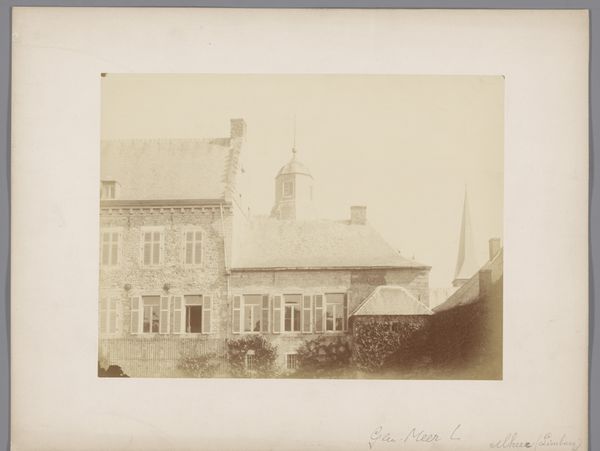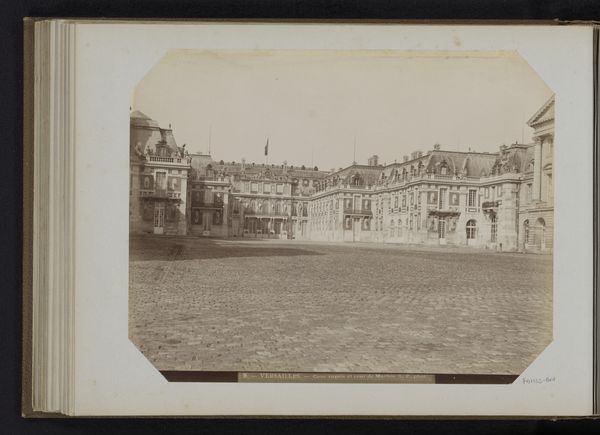
Frankfurt am Main_ View of the Cronstettisches Stift from the garden, with archive and imperial kitchen, no. 10 1864
0:00
0:00
albumen-print, print, paper, photography, albumen-print, architecture
#
albumen-print
# print
#
landscape
#
paper
#
photography
#
watercolor
#
albumen-print
#
architecture
Copyright: Public Domain
Curator: This albumen print, a photograph by Carl Friedrich Mylius titled "Frankfurt am Main: View of the Cronstettisches Stift from the garden, with archive and imperial kitchen, no. 10" dates back to 1864. Editor: It has an austere feel, wouldn’t you agree? A kind of institutional weight is palpable, despite the softening effect of the garden. The monochrome tones create a distance. Curator: I see the weight you describe, certainly. It's fascinating how these older photographs become symbolic documents. Buildings are so much more than bricks and mortar; they're containers of societal values, memory, and power. Here, the archive and kitchen – spaces of record-keeping and sustenance – reflect a very specific social structure. Editor: Precisely. And in a charitable institution like the Cronstettisches Stift, issues of gender and class are inevitably at play. Who was served, and who did the serving? The formal garden hints at ideas of control and order, maybe obscuring labor exploitation and wealth disparity. Curator: Indeed. We’re drawn to how Mylius has carefully composed the scene. Notice the geometric precision, how the lines of the buildings mirror the orderly garden paths, which might also be visual metaphors of societal strictures of the time. There is symbolic framing around gender roles, as well as around wealth. Editor: Thinking of this within the context of photography in the mid-19th century…it’s interesting. The technology was democratizing representation, yet photographers often reinforced existing power structures by aestheticizing the status quo. It asks to what degree does representation serve ideological goals? Curator: Well said. What seems like a straightforward landscape actually yields layers of cultural commentary. The architecture, the very act of documenting it…it's all speaking. The picture operates as both a historical artifact and a study in representation. Editor: It invites us to be skeptical, really. To probe beneath the surface of idyllic representation and reveal the networks of power at work. It is amazing how something captured in such a short time becomes evidence and representation for much bigger cultural moments and long lasting meanings.
Comments
No comments
Be the first to comment and join the conversation on the ultimate creative platform.
